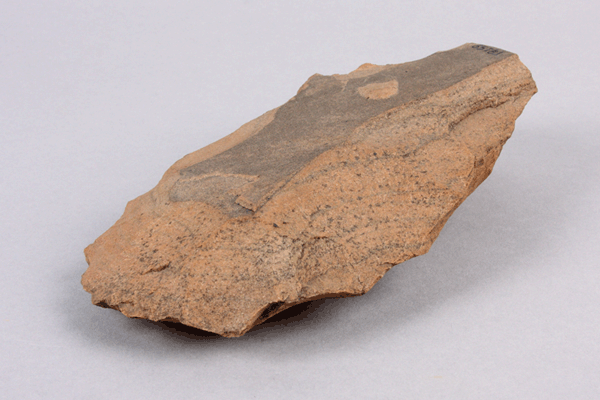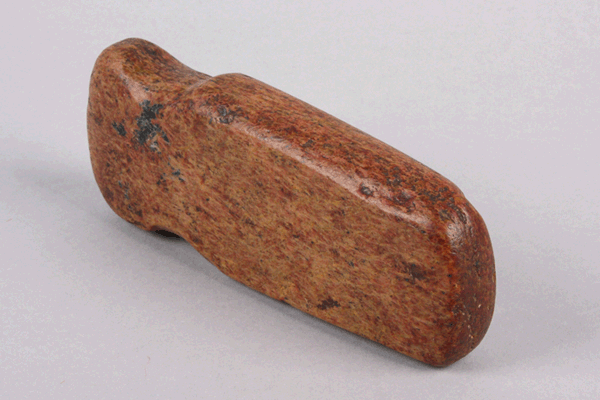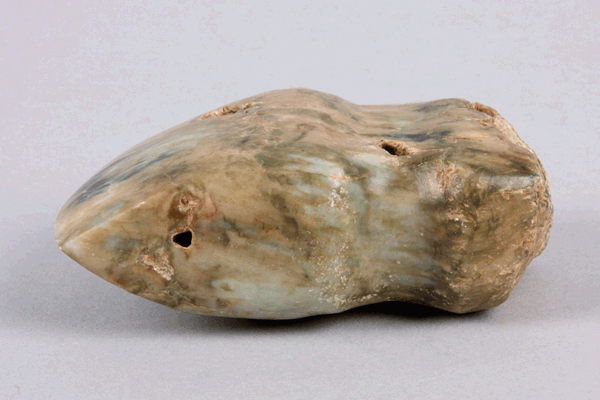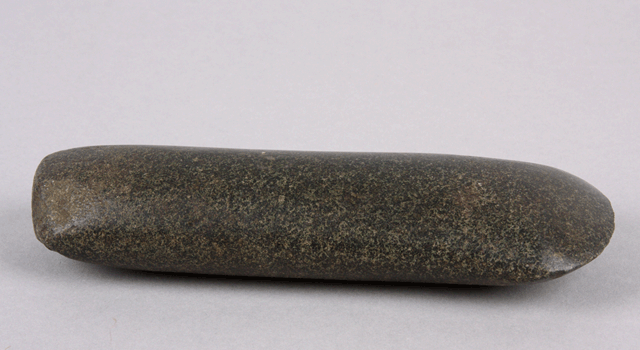

65.26.1, flaked stone axe
19 centimeters (7 ½ inches) long by 11 ½ centimeters (4 ½ inches) wide
Photograph by B. Bernard
Axes can be made of several types of stone. Some of them are shaped by breaking off pieces. That method can produce a sharp cutting edge very quickly.

75.317.62, ground stone axe
18 ½ centimeters (7¼ inches) long by 7 centimeters ( 2 ¾ inches) wide
Photograph by B. Bernard
Other types of stone were shaped smooth by grinding against another rock.
Axes made with any method required sharpening as they were used. Flaking or grinding the working edge always made the axe shorter.The next example shows an axe that was used until it was too short to sharpen any more.

75.317.73, axe
11 centimeters (4 ¼ inches) long by 6 ½ centimeters (2 ½ inches) wide
Photograph by B. Bernard

69.61.4, adze or maul
16 ½ centimeters (6 ½ inches) long by 6 centimeters (about 2 inches) wide
Photograph by B. Bernard
This longer tool might have been made for shaping wood once the tree was cut down. It could have been used as a maul for splitting logs or as an adze to smooth beams by chipping off bark.
To return to the Shelter page, please click here.
All content copyright © Maxwell Museum of Anthropology, University of New Mexico. High-resolution versons of photographs may be ordered from the Maxwell Museum's photo archives. Please make note of the catalogue numbers. For more information please visit the photo archives web page
Page last revised on March 2, 2011. Please report problems to toh@unm.edu